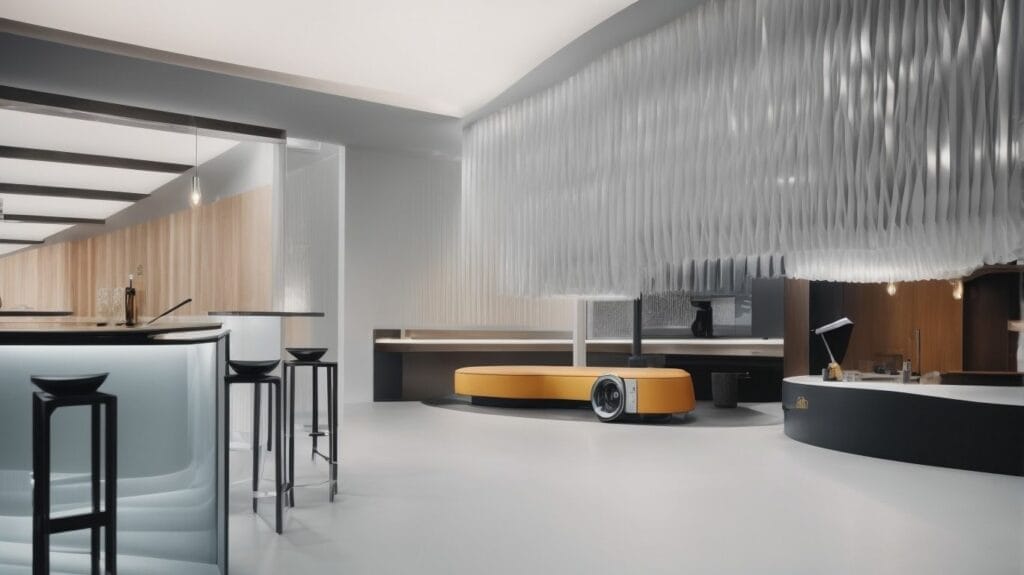3D printing, also known as additive manufacturing, has revolutionized the manufacturing industry by allowing the creation of complex and customized objects. While 3D printing is commonly associated with plastic materials, technological advancements have made it possible to 3D print in metal as well. This article explores the possibilities and limitations of 3D printing in metal.
How Does 3D Printing in Metal Work?
There are two main techniques used for 3D printing in metal:
1. Powder Bed Fusion Techniques: This method involves selectively melting layers of metal powder using a high-powered laser or electron beam to create the desired object.
2. Directed Energy Deposition Techniques: In this technique, metal wire or powder is melted and deposited layer by layer, similar to a traditional welding process, to build the object.
What Metals Can You 3D Print?
Several metals can be 3D printed using the above techniques, including:
1. Titanium: Known for its high strength-to-weight ratio and corrosion resistance, titanium is widely used in the aerospace and medical industries.
2. Stainless Steel: This versatile and durable metal is commonly used in manufacturing, construction, and medical applications due to its excellent mechanical properties and corrosion resistance.
3. Aluminum: With its lightweight and high thermal conductivity, aluminum is often used in aerospace, automotive, and consumer goods industries.
4. Inconel: This superalloy is known for its high temperature and corrosion resistance, making it suitable for applications in aerospace, chemical processing, and energy industries.
Advantages of 3D Printing in Metal
– Complex Geometries: 3D printing in metal allows the fabrication of intricate and complex shapes that would be difficult or impossible to achieve with traditional manufacturing methods.
– Cost Savings: By eliminating the need for complex tooling and reducing material waste, 3D printing in metal can result in cost savings, especially for low-volume production.
– Reduced Material Waste: Compared to subtractive manufacturing processes, 3D printing in metal produces minimal material waste, making it a more sustainable option.
Limitations and Challenges of 3D Printing in Metal
– High Equipment Cost: 3D printing in metal requires specialized and expensive equipment, making it inaccessible for some businesses.
– Post-Processing Requirements: After 3D printing, metal parts often require secondary processes such as heat treatment, machining, or surface finishing to meet the required specifications.
– Design Limitations: Certain design considerations, such as overhangs and unsupported structures, may pose challenges in 3D printing in metal, requiring additional support structures or design modifications.
Applications of 3D Printing in Metal
– Aerospace Industry: 3D printing in metal enables the production of lightweight yet strong components for aircraft and spacecraft, reducing fuel consumption and improving performance.
– Medical and Dental Field: Metal 3D printing allows the production of customized implants, prosthetics, and surgical tools with complex geometries tailored to individual patients’ needs.
– Automotive Manufacturing: Metal 3D printing finds applications in the automotive industry for rapid prototyping, tooling production, and the fabrication of lightweight and high-performance parts.
As technology advances, 3D printing in metal holds immense potential for various industries, offering unique advantages and driving innovation in manufacturing processes.
Key takeaways:
- 3D Printing in Metal is possible: Various techniques like Powder Bed Fusion and Directed Energy Deposition allow for the 3D printing of metals, such as titanium, stainless steel, aluminum, and Inconel.
- Advantages of 3D Printing in Metal: It offers the ability to create complex geometries, cost savings, and reduced material waste compared to traditional manufacturing methods.
- Applications of 3D Printing in Metal: The aerospace industry, medical and dental field, and automotive manufacturing are some sectors that extensively use 3D printing in metal.
How Does 3D Printing in Metal Work?
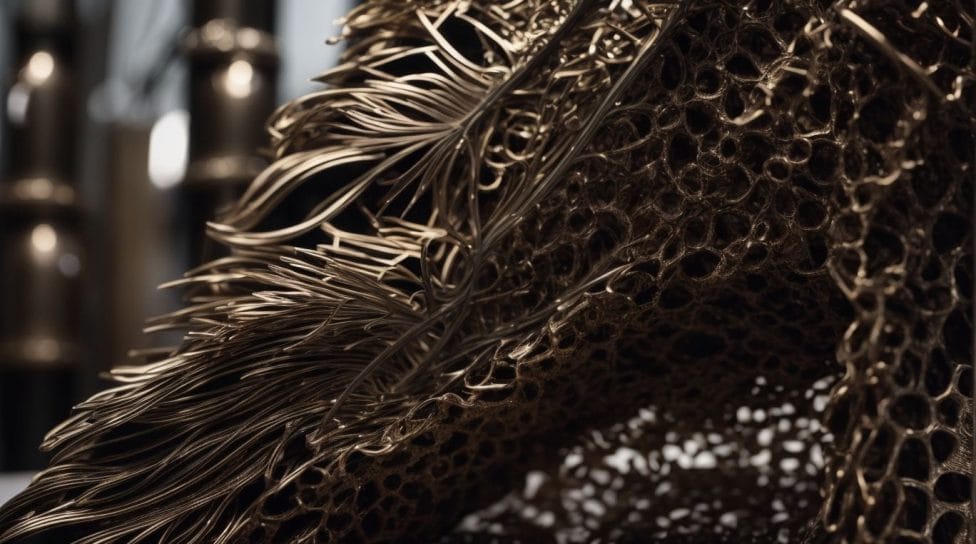
Photo Credits: Futureproof3D.Com by Jesse Torres
Get ready to dive into the fascinating world of 3D printing in metal and uncover the secrets of how it works. We’ll explore two main techniques: powder bed fusion and directed energy deposition. From layering fine metal powders to utilizing high-energy lasers or electron beams, these methods revolutionize manufacturing possibilities. So, fasten your seatbelt and join us on this thrilling exploration into metal 3D printing.
1. Powder Bed Fusion Techniques
The sub-topic “Powder Bed Fusion Techniques” in 3D printing in metal involves two main methods: Selective Laser Melting (SLM) and Electron Beam Melting (EBM).
| Method | Process | Advantages |
| SLM | Metal powder is spread layer by layer and selectively melted using a laser. | High precision, complex geometries, and a wide range of materials. |
| EBM | Electron beam selectively melts metal powder in a vacuum environment. | Good mechanical properties, reduced residual stress, suitable for titanium. |
2. Directed Energy Deposition Techniques
| 2. Directed Energy Deposition Techniques |
| 1. Laser Metal Deposition (LMD) |
| 2. Electron Beam Additive Manufacturing (EBAM) |
| 3. Direct Energy Deposition (DED) |
| 4. Laser Engineered Net Shaping (LENS) |
What Metals Can You 3D Print?
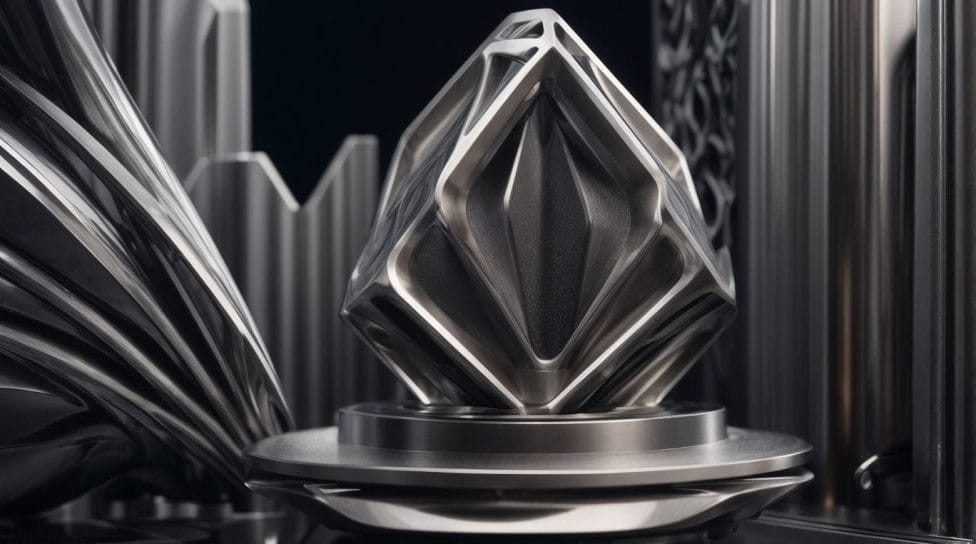
Photo Credits: Futureproof3D.Com by Keith Wilson
When it comes to 3D printing, the possibilities seem endless! But have you ever wondered what metals can be used in this cutting-edge technology? Let’s dive into the exciting world of metal 3D printing and explore the incredible potential of materials such as titanium, stainless steel, aluminum, and Inconel. From their unique properties to real-world applications, we’ll uncover the fascinating capabilities of these metals that can take your 3D printing projects to a whole new level.
1. Titanium
Titanium is a versatile metal that can be 3D printed, offering various benefits across various industries. As a lightweight and robust material, it is highly resistant to corrosion and is biocompatible, making it an excellent choice for applications in the aerospace, medical, and automotive sectors. In the aerospace industry, titanium is extensively utilized for manufacturing complex components, reducing overall weight and improving fuel efficiency. Medical professionals rely on its biocompatibility to produce implants and surgical instruments. Additionally, this resilient metal enhances the performance and safety of automotive parts. Using titanium in 3D printing enables the creation of intricate designs that often challenge conventional manufacturing methods.
2. Stainless Steel
Stainless steel is commonly used in 3D printing due to its durability and corrosion resistance. It offers a high strength-to-weight ratio and is suitable for applications where strength and stability are crucial. Stainless steel can be printed using powder bed fusion techniques and directed energy deposition techniques. With 3D printing in stainless steel, complex geometries can be achieved, leading to innovative designs. This material finds application in various industries, including aerospace, automotive, and medical fields. Its versatility and properties make stainless steel a popular choice for additive manufacturing.
Stainless steel, a material known for its durability and corrosion resistance, is commonly used in 3D printing. Its high strength-to-weight ratio and suitability for applications that require strength and stability make it an ideal choice. 3D printing techniques such as powder bed fusion and directed energy deposition can be used to print stainless steel, creating intricate designs. This versatile material is widely used in industries like aerospace, automotive, and medical due to its outstanding properties.
The discovery of stainless steel dates back to 1913, when English metallurgist Harry Brearley stumbled upon it while searching for erosion-resistant materials for gun barrels. Its exceptional resistance to corrosion and impressive tensile strength propelled its widespread adoption across different industries. Besides being extensively used in 3D printing, stainless steel has found its way into construction, kitchen appliances, and medical equipment, showcasing its value and versatility in various applications.
3. Aluminum
Aluminum, one of the metals that can be 3D printed using various techniques, finds wide applications in industries such as aerospace, automotive, and manufacturing.
| Advantages of 3D Printing in Aluminum: | Limitations and Challenges of 3D Printing in Aluminum: | Applications of 3D Printing in Aluminum: |
| – Lightweight and strong material | – High equipment cost | – Aerospace components |
| – Design flexibility and complexity | – Limited size capabilities | – Automotive parts |
| – Cost-effective for small productions | – Surface finish requirements | – Prototyping and product development |
4. Inconel
Inconel, a widely used metal for 3D printing, is known for its exceptional properties. It offers high-temperature resistance, making it a suitable choice for the aerospace and automotive industries. Additionally, it demonstrates excellent corrosion resistance, making it ideal for marine and chemical processing environments. Furthermore, Inconel exhibits remarkable strength and durability thanks to its outstanding mechanical properties. Moreover, it allows for easy welding and joining, enabling the creation of complex structures.
When utilizing Inconel for 3D printing, it is crucial to consider the high heat required during the printing process and the subsequent post-processing steps to achieve results.
Advantages of 3D Printing in Metal
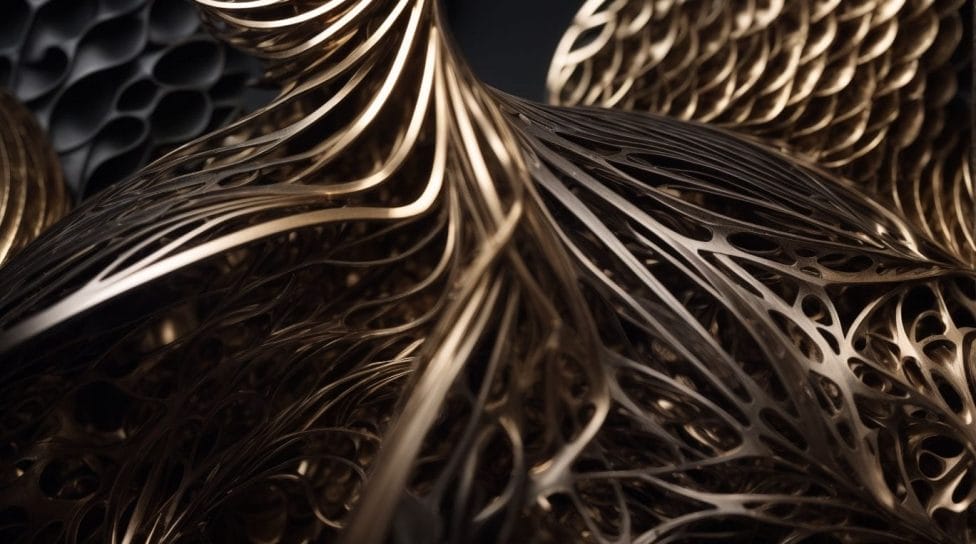
Photo Credits: Futureproof3D.Com by Timothy Scott
Unlocking the potential of 3D printing in metal brings a world of advantages. Discover the power of this cutting-edge technology as we delve into the distinctive benefits it offers. From the ability to create intricate and complex geometries to significant cost savings and reduced material waste, these sub-sections will showcase how 3D printing in metal is revolutionizing various industries. Get ready to be amazed by the possibilities this innovative technique presents.
1. Complex Geometries
Complex geometries are an essential aspect of 3D printing as they allow for the creation intricate and detailed designs that would be difficult or impossible to produce using traditional manufacturing methods. This capability not only opens up a world of possibilities in various industries but also offers improved efficiency and performance in different applications.
Here are some examples of complex geometries in different industries:
| Industry | Example of Complex Geometries |
| Aerospace | Complex lattice structures for lightweight components |
| Medical and Dental | Customized implants with intricate features |
| Automotive | Complex cooling channels in engine components |
The ability to 3D print complex geometries revolutionizes industries by enabling the production of unique and innovative designs. This technological advancement expands the possibilities of what can be accomplished with metal 3D printing, ultimately leading to enhanced efficiency and performance in various applications.
2. Cost Savings
3D printing in metal offers significant cost savings compared to traditional manufacturing methods.
- Reduced material waste: With traditional manufacturing, excess material is often discarded. 3D printing only uses the necessary amount of material, minimizing waste.
- Lower labor costs: 3D printing requires less manual labor, reducing production costs.
- Consolidated production: Multiple parts can be printed in a single build, eliminating the need for assembly and reducing production time.
- On-demand production: With 3D printing, products can be produced as needed, eliminating large inventory and storage costs.
- Design optimization: 3D printing allows for complex geometries and lightweight structures, optimizing designs for cost-efficient production.
True story: A manufacturing company saved over 50% in production costs by implementing 3D printing for a complex metal component. The reduced material waste and simplified production process led to significant cost savings without compromising quality or functionality.
3. Reduced Material Waste
Reduced Material Waste is a significant advantage of 3D printing in metal. Compared to traditional manufacturing methods, 3D printing minimizes the generation of scrap material, resulting in lower costs and less environmental impact. By utilizing only the amount of metal required for creating the desired object, 3D printing effectively reduces material waste. This not only leads to cost savings but also promotes sustainability by decreasing the amount of waste that ends up in landfills. To further reduce material waste, a pro-tip is to optimize designs and strategically utilize support structures during the printing process to minimize excess material usage.
Limitations and Challenges of 3D Printing in Metal

Photo Credits: Futureproof3D.Com by Patrick Johnson
3D printing in metal may seem like a cutting-edge technology, but it has limitations and challenges. From high equipment costs to intricate post-processing requirements and design limitations, this section explores the various hurdles faced in metal 3D printing. Delve into the intriguing world of additive manufacturing as we navigate the realities that shape the possibilities of transforming digital designs into tangible metal objects.
1. High Equipment Cost
The high equipment cost of 3D printing in metal is a significant consideration for businesses and individuals looking to adopt this technology. Here is a breakdown of the costs involved in metal 3D printing:
| Equipment | Cost |
| Metal 3D printer | Typically, it ranges from $100,000 to several million dollars, depending on the size and capabilities. |
| Supporting equipment (e.g., powder handling, post-processing) | Additional costs that can vary depending on specific requirements |
| Materials | Metal powders can be expensive, ranging from tens to hundreds of dollars per kilogram. |
| Operating costs | Electricity, maintenance, and other overhead expenses |
It is important to carefully assess the return on investment and the potential benefits that metal 3D printing can bring before committing to the high upfront costs.
2. Post-Processing Requirements
| 2. Post-Processing Requirements |
| 1. Removal of Support Structures |
| 2. Surface Finishing |
| 3. Heat Treatment |
| 4. Inspection and Quality Control |
3. Design Limitations
When considering 3D printing in metal, it’s crucial to have an awareness of the design limitations that accompany the process. These design limitations play a significant role in impacting the complexity and functionality of the printed objects. Some key points to consider regarding design limitations include:
| 1. Size constraints: | It is important to acknowledge that 3D printers have certain size limitations. This implies that larger objects may need to be printed in multiple parts and assembled later. |
| 2. Support structures: | Intricate geometries or overhanging features might necessitate the utilization of support structures. However, these support structures must be removed post-printing, and they can influence the overall design. |
| 3. Material properties: | It is essential to recognize that different metals possess diverse mechanical properties, such as strength and thermal conductivity. These properties can greatly influence the design choices. |
| 4. Surface finish: | It should be noted that 3D-printed metal objects could exhibit a rougher surface finish compared to parts manufactured through traditional methods. This roughness may impact both functionality and aesthetics. |
By gaining a thorough understanding of these design limitations, designers can optimize their designs for 3D printing in metal and achieve successful outcomes.
Applications of 3D Printing in Metal
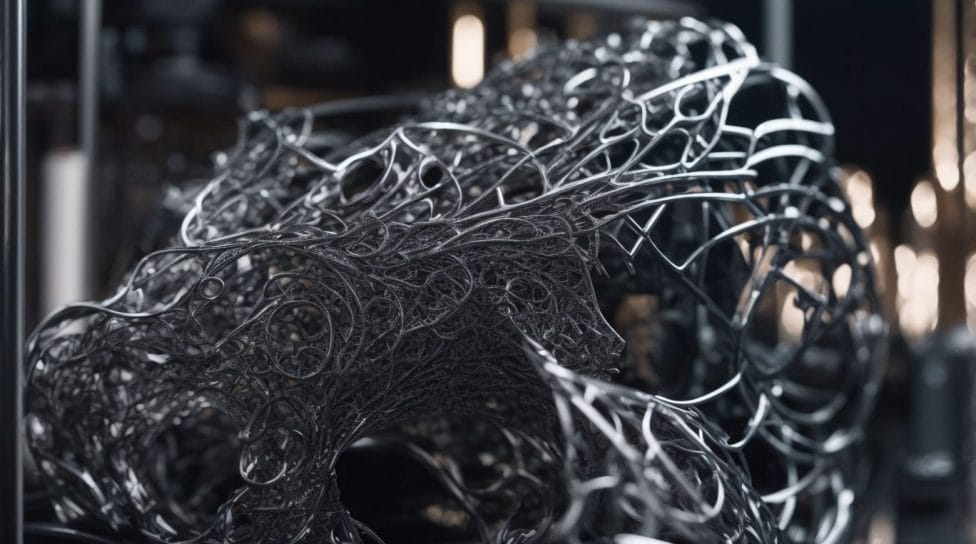
Photo Credits: Futureproof3D.Com by Jonathan Roberts
From aerospace to medical and automotive manufacturing, the applications of 3D printing in metal are limitless. Explore how this groundbreaking technology is revolutionizing these industries and paving the way for innovation. Discover how 3D printing is reshaping the manufacturing landscape, creating intricate metal components with precision and efficiency. See how it contributes to advancements in aerospace technology, transformative developments in medical and dental fields, and pushing the boundaries of automotive manufacturing. Get ready to dive into the exciting world of metal 3D printing and its diverse applications.
1. Aerospace Industry
The aerospace industry has fully embraced the use of 3D printing in metal due to the multitude of benefits it offers. This innovative technology allows for the creation of intricate geometries, thereby minimizing the reliance on numerous parts and assemblies. Additionally, opting for this technique enables cost savings as it eliminates the necessity for expensive molds and tooling. By adopting 3D printing in metal, wastage of materials is significantly reduced since it incorporates only the exact amount of material essential for the task at hand. The aerospace industry effectively leverages this groundbreaking technology for various purposes, including the production of lightweight components, the enhancement of fuel efficiency, and the improvement of overall performance and durability. Consequently, the integration of this manufacturing advancement has completely transformed the aerospace industry by expediting the production process, reducing expenses, and pushing the boundaries of design possibilities.
2. Medical and Dental Field
In the medical and dental field, 3D printing in metal has revolutionized various applications, offering unparalleled precision and customization.
- Prosthetics: 3D-printed metal prosthetics provide a perfect fit and improved functionality, enhancing the quality of life for patients.
- Dental Implants: Custom-made 3D-printed metal implants offer a more accurate and efficient solution than traditional ones.
- Surgical Instruments: Metal 3D printing allows for producing complex surgical instruments with intricate designs, improving surgical outcomes.
- Bioprinting: Scientists are exploring using 3D-printed metal structures to create scaffolds for tissue engineering, enabling the growth of new tissues and organs.
3. Automotive Manufacturing
| 3. Automotive Manufacturing |
| 3D printing in metal is revolutionizing the automotive manufacturing industry. It offers several advantages, such as: |
| 1. Design Freedom: 3D printing creates complex geometries, allowing manufacturers to produce intricate automotive parts that were previously impossible or costly to make. |
| 2. Lightweighting: By utilizing lightweight materials like titanium and aluminum, 3D-printed automotive components help reduce the overall weight of vehicles, resulting in improved fuel efficiency. |
| 3. Customization: With 3D printing, automotive manufacturers can easily customize parts and prototypes according to individual customer needs, saving time and resources. |
Some Facts About Can You 3D Print in Metal?
- ✅ Metal 3D printing revolutionizes part production. (Source: Our Team)
- ✅ Metal 3D printing allows for the creation of complex parts. (Source: Our Team)
- ✅ Metal 3D printing eliminates the need for tooling and is highly automated. (Source: Our Team)
- ✅ Metal 3D printing enables the creation of optimized geometries. (Source: Our Team)
- ✅ Metal 3D printing offers geometric freedom and minimal operator time. (Source: Our Team)

